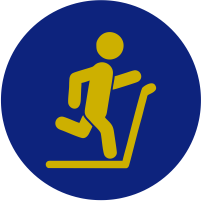Sciatica
What Is Sciatica?
If you suddenly start feeling pain in your lower back or hip that radiates to the back of your thigh and into your leg, you may have a protruding (herniated) disc in your spinal column that is pressing on the nerve roots in the lumbar spine. This condition is known as sciatica.
What Causes Sciatica?
You are most likely to get sciatica between the ages of 30 and 50 years. It may happen as a result of the general wear and tear of aging, plus any sudden pressure on the disks that cushion the bones (vertebrae) of your lower spine.
Sciatica is most commonly caused by a herniated disc. The gel-like center (nucleus) of a disc may protrude into or through the disc’s outer lining. This herniated disc may press directly on the nerve roots that become the sciatic nerve. Nerve roots may also get inflamed and irritated by chemicals from the disc’s nucleus.
Approximately 1 in every 50 people will experience a herniated disc at some point in their life. Of these, 10% to 25% have symptoms that last more than 6 weeks.
In rare cases, a herniated disc may press on nerves that cause you to lose control of your bladder or bowel, referred to as cauda equina syndrome. If this happens, you may also have numbness or tingling in your groin or genital area. This is an emergency situation that requires surgery. Phone your doctor immediately.
What Are The Symptoms of Sciatica?
Sciatica may feel like a bad leg cramp, with pain that is sharp (“knife-like”), or electrical. The cramp can last for weeks before it goes away.
You may have pain, especially when you move, sneeze, or cough. You may also have weakness, “pins and needles” numbness, or a burning or tingling sensation down your leg.
What Are The Treatment Options For Sciatica?
Nonsurgical Treatment
The condition usually heals itself, given sufficient time and rest. Approximately 80% to 90% of patients with sciatica get better over time without surgery, typically within several weeks.
Nonsurgical treatment is aimed at helping you manage your pain without long-term use of medications.
Nonsteroidal anti-inflammatory drugs such as ibuprofen, aspirin, or muscle relaxants may also help. In addition, you may find it soothing to put gentle heat or cold on your painful muscles.
It is important that you continue to move. Do not remain in bed, as too much rest may cause other parts of the body to feel discomfort.
Find positions that are comfortable, but be as active as possible. Motion helps to reduce inflammation. Most of the time, your condition will get better within a few weeks.
Sometimes, your doctor may inject your spinal area with a cortisone-like drug.
As soon as possible, start stretching exercises so you can resume your physical activities without sciatica pain. Your doctor may want you to take short walks and may prescribe physical therapy.
Surgical Treatment
You might need surgery if you still have disabling leg pain after 3 months or more of nonsurgical treatment. As part of your surgery, your herniated disc may be removed to stop it from pressing on your nerve.
The surgery (laminotomy with discectomy) may be done under local, spinal, or general anesthesia. This surgery is usually very successful at relieving pain, particularly if most of the pain is in your leg.
Our team is here for you
We offer the best, least invasive and least aggressive options to relieve your pain and symptoms so you can get back to the life you love. Atlantic Orthopaedic Specialists Spine and Scoliosis Care Center has convenient locations in Virginia Beach, Norfolk and Chesapeake.



